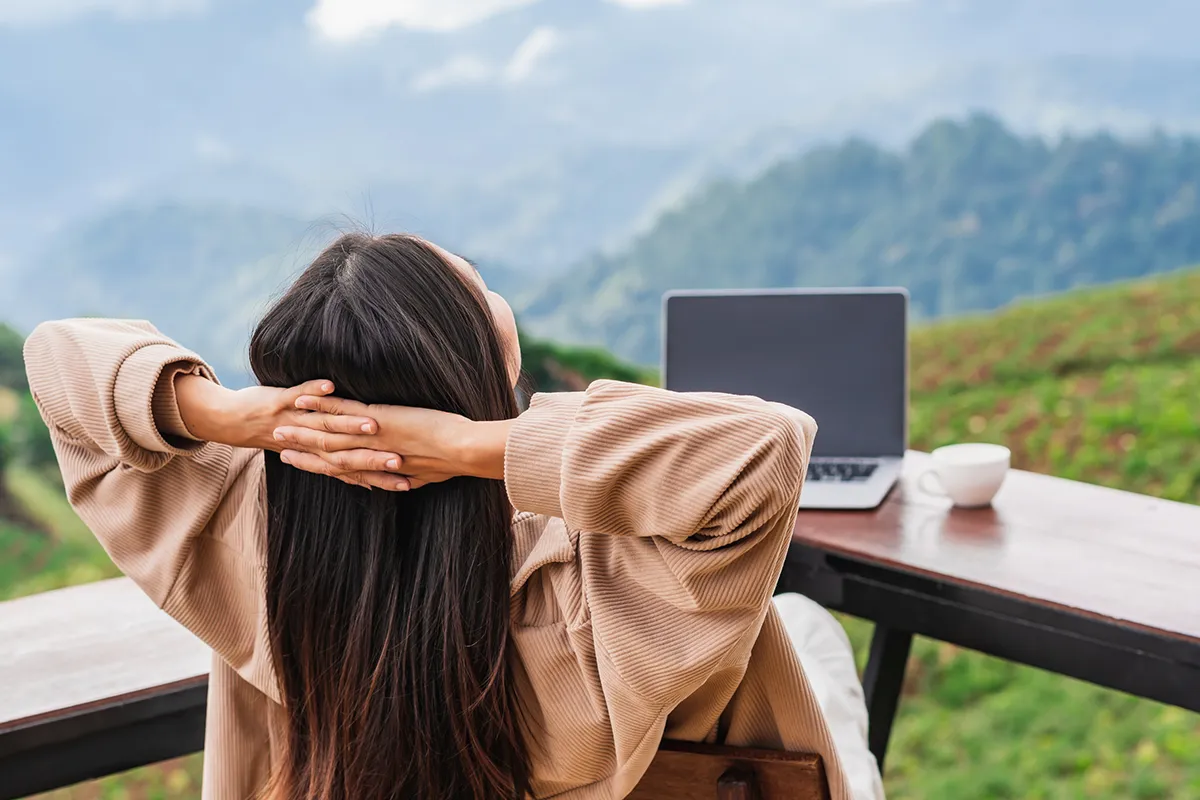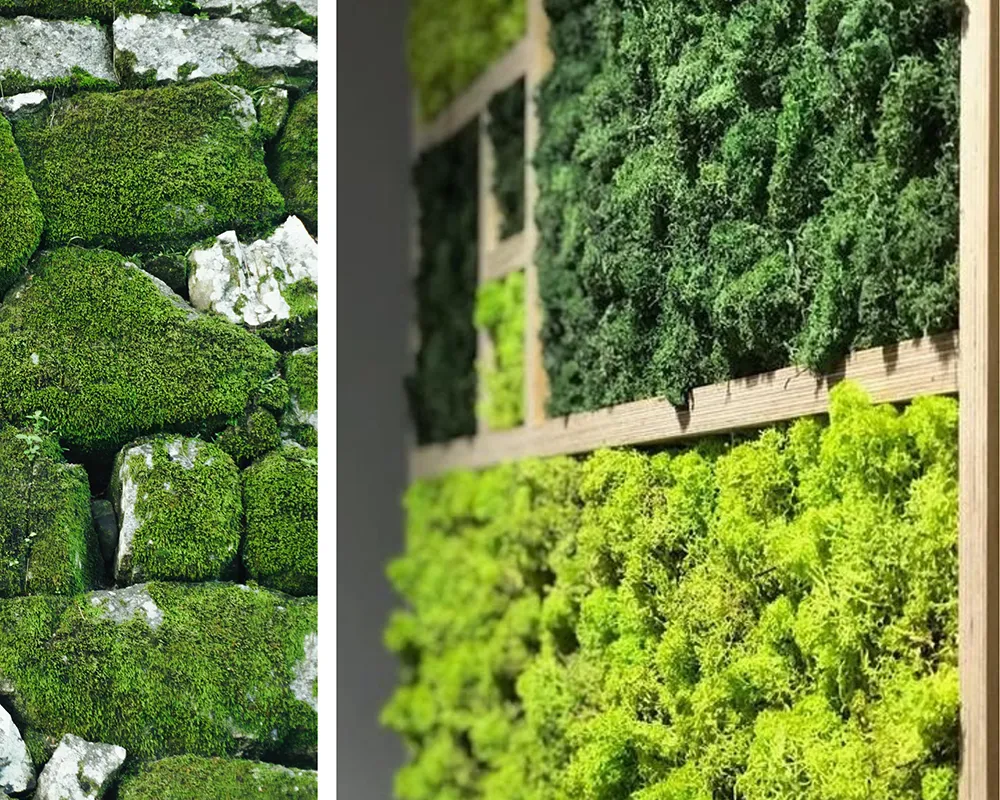Even the most beautiful greenery can feel out of place when it isn’t thoughtfully designed. What makes one installation feel harmonious and another out of place? The answer lies in biophilic design principles — foundational ideas that guide living walls, moss art, indoor gardens, biomorphic structures, and plant rental displays.

At its best, biophilic design connects people to natural patterns and systems in ways that improve well-being and support how a space is used. Below, we outline some key principles behind impactful plant-centered designs and how they inform successful plant design installations in Chandler, Tempe, and the greater Phoenix area.
Biophilic design begins with connection
The central goal of biophilic design is to strengthen people’s connection to nature, even indoors. This can be achieved through greenery, water, wood, and light — elements that instinctively calm and engage us. According to Kellert & Calabrese’s Biophilic Design Guidelines, direct connections to nature consistently improve cognitive performance and reduce stress. Experienced biophilic designers prioritize real materials and sensory experiences that make this connection tangible, even when live plants are rotated regularly.

Plant displays should be dynamic but not chaotic
Great designs feel dynamic but not chaotic. Layering heights, textures, and foliage shapes creates the “organized complexity” described in Terrapin Bright Green’s 14 Patterns of Biophilic Design — a balance of richness and order (Terrapin Green’s patterns were updated to include awe as the 15th principle in 2020).
To better understand this concept, consider this example: Grouping containers of snake plants on the ground, with pothos vines draping into the arrangement, may appear chaotic. However, placing the pothos in a basket or on a higher shelf, just a few feet to one side of the arranged snake plants, may give more linear structure to the plant display, resulting in Green’s “organized complexity.”
For Plant Solutions’ clients in Chandler, Tempe, and the greater Phoenix area, this often means choosing complementary species and container designs that bring depth to a space while remaining easy to maintain. In this Arizona desert, we emphasize using heat-acclimated plant species for patioscapes and breezeways.
Design for prospect and refuge
People feel more comfortable in spaces when they can see distant surroundings while also feeling sheltered — a concept known as “prospect and refuge.” The concept of prospect and refuge was first proposed by geographer Jay Appleton in his 1975 book, The Experience of Landscape. He theorized that humans, from an evolutionary standpoint, prefer environments that offer both a clear view (prospect) for spotting opportunities or threats, and a sense of concealment or shelter (refuge) for safety and retreat. This preference is rooted in our ancestral need for survival and has been proven to reduce anxiety and improve focus.

Plant walls, tall potted plants, and moss panels are often used to create spatial divisions, soften open spaces, and define private nooks without closing them off completely. Because natural tree lines are absent from the natural landscapes of Chandler, Tempe, and Phoenix, using greenery to create a sense of refuge can feel unexpectedly comforting.
Mimic movement and change
Natural environments are never static — leaves shift, water ripples, and light changes. Good designs reflect this by introducing elements of movement and dynamism. Upscale biophilic design displays that boast breezeways, water features, subtle bird sounds, and fish aquariums are another example of this design principle in action. Biophilic artists are so committed to this principle that the leaves of artificial trees blow in the wind just as natural ones would. For clients that enjoy ongoing plant rental, seasonal refreshes and rotating displays ensure spaces feel alive and ever evolving over time.

Material authenticity – incorporate natural elements
Biophilic spaces rely on authentic natural materials — live plants, moss, wood, stone — because they feel real to the senses. Even when artificial elements are used (such as UV-protected faux plants for patioscapes), they are curated to appear and feel hyper-realistic to emphasize natural textures and colors. This maintains a grounded, organic feel.
Image: wood-plant-containers

Plant Solutions has access to hundreds of plant containers that represent a variety of natural textures. See the following images for examples of fiber-caly, fiber-stone, granite, and wood. Another popular natural element worked into our custom plant designs is polished black rock and riverstones, which harmonize with almost any Arizona decor.

Design with proportions and human scale in mind
The best plant designs feel intentional because they’re scaled to the number of people who use the space. Oversized trees in a conference room can overwhelm, while tiny planters in a large lobby get missed. Plant designers consider ceiling heights, sightlines, and traffic flow to ensure installations feel proportional and enhance, rather than distract from, the space.
How moss walls and plant rental brings these principles to life
Plant rental programs, plant walls, moss art, and patioscapes give Chandler, Tempe, and Phoenix business owners ample opportunity to bring nature to their clients. Plant rental, one of our most popular services, is the most universal. It offers financial predictability, seasonal updates, and full-service maintenance without a large upfront investment or ongoing plant care responsibilities.
Moss art, also known as MossWallArt™ are framed or wall-embedded plant design pieces that embody a few of Terrapin Bright Green’s patterns: visual connection with nature, biomorphic elements, and material authenticity. The various types of moss (such as reindeer, sheet, and mood moss) combined with natural woods and organic features allow for the creation of intricate, organic shapes and patterns that mimic those found in natural landscapes. Since MossWallArt™ is made from 100% real, preserved mosses, lichens, and natural woods, it also provides a strong material connection with nature.

Why it matters
Biophilic design is about creating environments that feel restorative and intentional. Whether it’s a living wall, moss panel, tree canopy, or plant rental display, each installation reconnects people with nature and improves how they feel at work.
If you’re a business owner in Chandler, Tempe, or the greater Phoenix area, our team can help you design and maintain plant displays that feel natural, balanced, and inspiring. Contact us today to learn more about our plant rental services and horticultural maintenance programs — and see how biophilic design can transform your space.
Frequently Asked Questions:
How can I use plants to achieve “prospect and refuge” in an open-plan office without building new walls?
One way our designers achieve “prospect and refuge” in an open-plan office without new walls is by using tall plants in long, narrow containers. These custom-built planters double as space dividers. This provides the “refuge” while allowing views through foliage for “prospect.” Unlike solid walls, using plants doesn’t disrupt existing air conditioning systems, preventing the unwanted expenses of reconfiguring airflow.
How does Plant Solutions ensure plant displays are designed with “proportions and human scale” in mind for different spaces?
Our process always begins with a thorough assessment of your specific space. We consider ceiling heights, sightlines, and foot traffic patterns. This allows us to recommend the ideal scale for trees, plant groupings, plant walls, and containers, ensuring that each installation enhances the space without overwhelming or getting lost.
Your article mentions “mimicking movement and change.” How can Plant Solutions help me achieve this in this Arizona climate without investing in water features or breezeways?
While large features are impactful, we can achieve natural dynamism through subtle elements. Our design team may select plants that gently sway with indoor air currents (created by fans, HVAC systems, or open windows), or bloom with different colored flowers throughout the year. We may also integrate lighting that highlights changing shadows and textures throughout the day.
Ready for a plant display that inspires?
Let’s talk about a design that works for your Arizona business.
